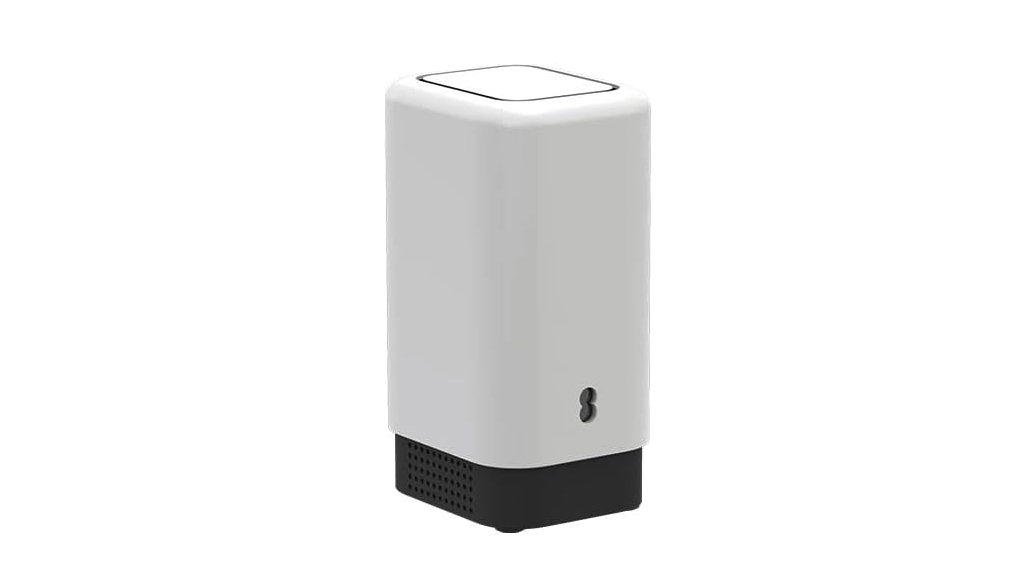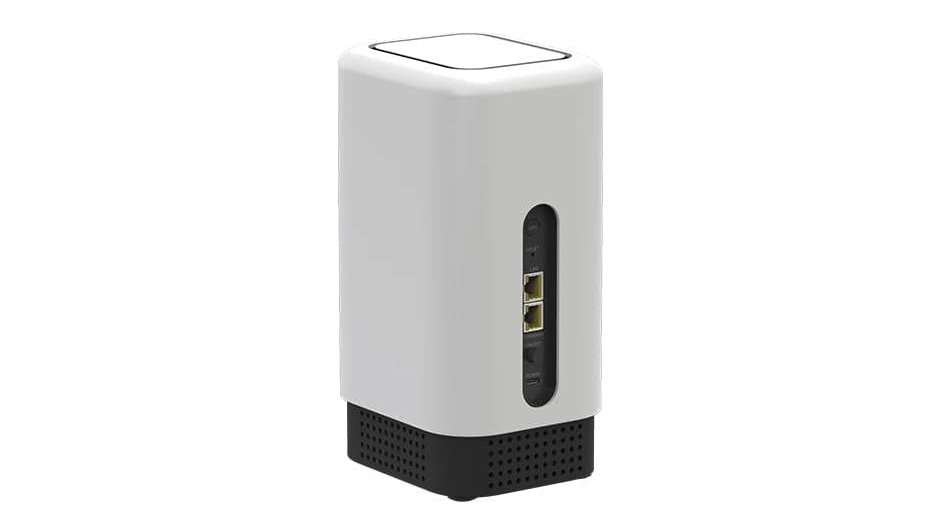The EE Smart 5G Hub is EE’s latest 5G home broadband router, and it’s the company’s best yet.
It’s designed to bring 5G internet to your home, so you can get all of your gadgets online at the same speeds as EE’s mobile network offers. Of course, whether that’s better or worse than the speeds you’d get with conventional broadband depends on a number of factors, which we’ll look at below.
We’ll also look at how the EE Smart 5G Hub compares to rival devices, and ultimately decide whether it’s worth buying.
Design
The EE Smart 5G Hub is essentially a white rectangle, though it has a black section at the bottom, providing a nice contrast with the white, and there are other black accents too, including a strip along the top, while the various ports hidden around the back.
It has ultimately got quite a similar look to many other 5G broadband options, but it’s an attractive enough design.

The EE Smart 5G Hub is a fairly large device at 227 x 133 x 131mm, so if space is an issue that’s something to consider. Given how tall this is it won’t fit on all shelves, for example – though ideally you want lots of space around a router anyway, so shelves aren’t often the best home for them.
Setup
As with all 5G routers, setup here is quite straightforward, and certainly easier than calling out an engineer for conventional broadband. There’s none of that here, just plug the EE Smart 5G Hub in, switch it on, and follow the simple instructions on the included quick start guide.
The advantage to this simplicity means almost anyone should be able to get it working without much trouble, and you can be up and running within minutes of your router arriving, so it’s a slick, seamless process.
There’s also no need for a landline here, which both simplifies things and could reduce your costs if you choose to ditch your landline as a result.
Performance and speeds
EE doesn’t state what the maximum speed available on the EE Smart 5G Hub is, but it does say that you can expect average speeds of 146Mbps.
Actual speeds will be largely dependent on the state of EE’s network in your area. Obviously if there’s no 5G coverage reaching your home then you’ll be limited to 4G, and triple-digit speeds will likely be out of reach.
If you have strong 5G coverage though, then speeds significantly higher than 146Mbps shouldn’t be unrealistic, as those are quite conservative speeds by 5G standards. There will be other factors though, such as how well the signal penetrates the walls of your home, how far you are from a mast, and whether there are other obstacles for the signal.
For what it’s worth this appears to be a rebranded Askey Smart 5G Hub HH70C (though EE hasn’t confirmed as much). In any case, the actual hardware will be capable of far higher speeds than you’ll actually achieve on EE’s network – but that’s true of most 5G routers on the UK’s networks.
Features and software

The EE Smart 5G Hub can get over 100 devices connected to the internet at once, which is more than the 64 figure that most 5G routers boast, and far more than most people are likely to need.
It also has two Ethernet ports (for wired connections), but there are no external antenna ports.
Finally, the EE Smart 5G Hub supports 802.11a/b/g/n/ac/ax Wi-Fi, and even Wi-Fi 7, which should help you get the most out of EE’s 5G capabilities.
Alternatives
There aren’t really any alternative options on EE. There’s the 5G WiFi, but this is a battery-powered mobile broadband device, so it’s designed to be taken with you when you’re away from Wi-Fi and sockets. It’s more compact as you’d expect being a portable device, and the specs are largely similar, including the same advertised average speeds and ability to get over 100 devices online.
If you’re open to other networks, then there’s the Three 5G Broadband and the Vodafone GigaCube 5G.
These are different devices, but not dramatically so. They each have maximum theoretical download speeds of 3.8Gbps, can get up to 64 devices online, and have two Ethernet ports, but no antenna ports.
So EE’s latest router has a slight edge in terms of the number of devices you can connect, but is otherwise similar.
Of course the other option is conventional fibre broadband. Whether this is better or worse will depend on the speeds of fibre available in your area, and whether you have a good 5G signal.
At the top end of fibre there are things like Virgin Gig1, which advertises average speeds of 1,130Mbps, which is far higher than you're likely to get with the EE Smart 5G Hub. However, that's not available to everyone, and there's a high chance your fibre broadband options will average under 100Mbps, in which case EE's alternative could well be better.
Conclusion
The EE Smart 5G Hub isn’t drastically different either to the competition or to previous EE 5G home broadband routers, but it does have some small advantages, most notably the number of devices it can get online, and its Wi-Fi 7 support.
That’s enough to make it one of the best 5G home broadband devices you can get on a UK network at the time of writing, but if you have the old model – or a model on a different network – there’s not really anything to be jealous about here.
If you want to be on EE specifically then this is a very solid buy (and the only real option) but it’s definitely worth considering other networks too, with Three in particular offering better deals on a similar device.










